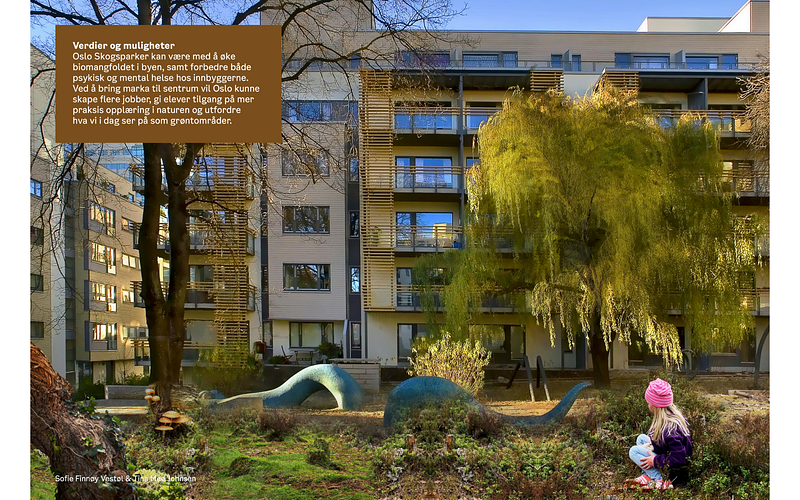
Making the ‘Oslo Futures Catalogue’, on the first ‘Strategic design for society’ course running at Oslo School of Architecture and Design (AHO), 2021
Einar Sneve Martinussen, Ted Matthews, Aleksandra Zamarajeva Fischer and I just wrapped the first version of the Strategic Design for Society course that we’ve been running for Masters design students at Oslo School of Architecture and Design (AHO). Across a 14-week course, the students had two main assignments, each with an external partner. First up, a six-week sprint to develop a portfolio of possible futures for Oslo neighbourhoods, expressed in terms of tangible social infrastructures, which is intended to contribute to, and counterpoint, the process of developing the city’s innovation strategy. The second project, which we’ll describe soon, took a similar approach, but addressed gender equity in societal planning for Karmøy municipality in western Norway, and has a longer timeframe to embed ideas into prototypes.
It’s the first time we’ve run the course. The following text outlines the lectures that helped frame some the methods used by students, as well as considerations on the finished work, which we ended up calling the Oslo Futures Catalogue.
Download the catalogue here
You can download a copy of the Oslo Futures Catalogue v1 (PDF) here. We have also reproduced the opening essay from the Catalogue separately, which delves a little deeper into the thinking behind the course.
The students collectively created the Catalogue, with us as editors, and the credit for individual contributions can be found on each spread of the document. The students where Pernille Hartvigsen, Cornelia Schmitt, Kamilla Bedin, Herman Freng Billett, Kristin Mar!e Brudeseth, Johanna Sofie Brämersson, Tina Mee Johnsen, Sigrid Løvlie, Nikolai Sabel, Åse Lilly Salamonsen, Lisa Siegel, Elizabeth Bjelke Stein, Glenn Sæstad, Mats Georg Syvertsen Søfting, Sofie Finnøy Vestøl and Anna Malene Vik.
Preparing the ground
Our lectures, which we would start each week with, covered aspects of strategic design theory and practice—Trojan Horses and Macguffins, Maginot Lines and Levers, Probes and Place-types, Half-Steps and Kits-of-Parts, Nolli Flips and Value Models, Snowploughs and Snowballs (and perhaps I’ll write about all that separately, part of a sequel to this.) We also worked thoroughly worked-through the concept of social infrastructures as the keystone in our imagination of the Scandinavian neighbourhood, extending Klinenberg’s powerful, if US-oriented, work in multiple directions—including nature-based infrastructures, distributed ‘non-grid’ technologies, Nordic civic architectures and ‘public luxury’. See the accompanying post for a little more on this thinking, as well as this backdrop in the Slowdown Papers.
We also contextualised the questions of innovation—again, as described in the sister article—within those of a Nordic ‘digital shift’, and Nordic public sector innovation, drawing from several years of research, practice and teaching by Einar and crew at AHO, as well as my own work at SITRA, Vinnova, and others, over the years.
But to set up the practical aspects of the project, Einar, Ted, and I described observation techniques, and different ways of seeing, sensing and describing, often via narrative formats. These approaches were not simply about observing and understanding, but also about conveying and describing. Taking this cultural approach, as subjective as it is objective, meant that we could also foreground critical perspectives of observer and representative, local and non-local, participant and designer. This was not about using data to represent a place, but culture, narrative, identity. This was another subtle ‘pulling of the rug’ from underneath the typical approaches to innovation strategies.
Ways of seeing
Einar started this aspect with great talk covering the branching narratives of Loki to the poetic evocation of place in Will Eisner; the embedded activism of Jane Jacobs to the oblique insights possible via street photography; the composed pacing of a Chris Ware page to the diagramming of food moving through domestic spaces (from Quaderns 271 About Buildings and Food), and the intriguingly evocative and ‘off’ drawings in Anno’s Journey by Mitsumasa Anno, all via the backdrop of Henri Lefebvre, and an investigation of ‘everyday life’ (discussed a little more in this adjacent piece). Einar also included necessary critiques of typical tech-led design fiction, such as the many research—cough—actually promotional films made in the last 15 years by tech companies, placed in the context of earlier tech-led visions of the future.



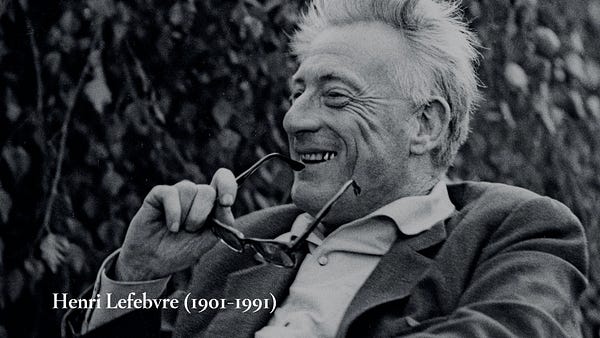


In my counterpointing talk, I shared my own enthusiasm for Eisner’s Dropsie Avenue and The Big City, as well as Chris Ware’s Building Stories, but also the neighbourhood amenities, media landscapes and tortured infrastructures of Judge Dredd, and the closer-to-home-in-Oslo Soft City by Pushwagner.

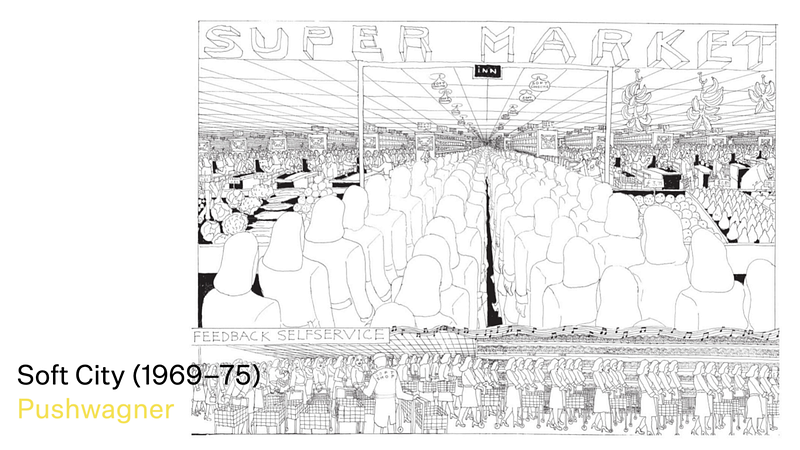
We also looked at other narrative forms for conveying relationships with places, and with the interactions, infrastructures, and technologies of everyday life, from a design perspective. These example from film are well-known in these circles, almost clichés—as well as Her, Children of Men, and Mon Oncle, I mentioned La Jetée, and the breakthrough of the adaptive, hackable and contigent ‘used universe’ approach in Star Wars. A well-worn path, this, but it still tends to trigger useful discussion.
Yet production designer Hannah Beachler’s work on Black Panther is particularly interesting. It conveys a place that obviously has a clear sense of advanced technology, yet positions that merely as notes within a broader palette of ideas about what future cities might be—vibrant, sustainable, regenerative, equitable, meaningful. As Allison Arieff noted, there are no cars in Wakanda, and the street life is clearly for culture, first and foremost. The highest of hi-tech sits within a diversity of technologies that includes advanced Lo-TEK infrastructures as well, all framed by ‘used universe’ sensibilities. And so tech and innovation is, appropriately, placed in a subservient position to the primacy of vibrant, meaningful, sustainable and equitable urban cultures.

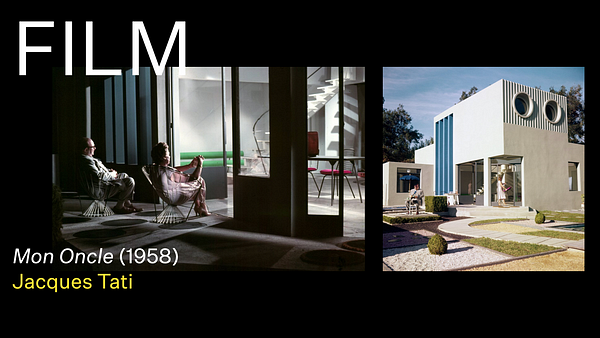
Video games also provide rich material. Here, I mentioned the variety of ways that Sega’s Yakuza series develops a sense of place, culture and environment, through its sharp and considered interplay between everyday contexts and extraordinary narrative. Grand Theft Auto 3’s use of threaded narratives, and embedded media and soundworlds, was immediately pored over upon its release, but outside of video game circles, Yakuza is perhaps not as well-known for the endlessly inventive ways it unpicks the fictional Tokyo district of Kamurochō. The ‘open world exploring’ in the game is not so far from the ‘open world exploring’ we wanted the students to perform in the Oslo neighbourhoods around them. Yakuza’s game-world is also heavily predicated on core social infrastructures—like karaoke bars, schools, cafés, and baseball batting centre—as well as a detective’s focus on the details of mundane urban environments. Both of these aspects—the supports of social infrastructures; the beauty and utility of everyday environments—were key to the design research. As a sensibility, it recalls Walter Hood and Grace Mitchell Tada’s writing in Black Landscapes Matter (2020), which I dwell on a little more in the accompanying piece: “Activating the mundane is an opportunity to see and experience the beauty and utility of the things in our life.”
Video games like Yakuza (or Breath of the Wild, for that matter) are predicated on these relationships between mundane things, infrastructures, people, place, and wider meaning, just as cities are. Perhaps they provide an interesting analogue for the practices of design research.

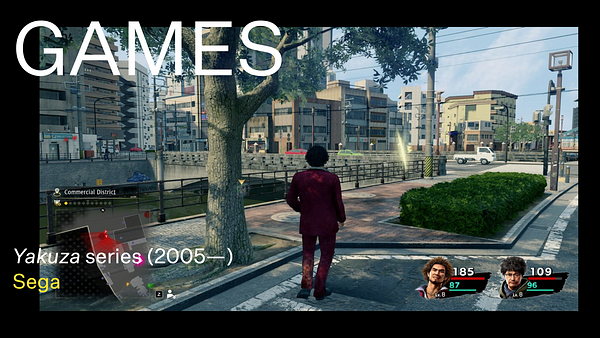


We also alighted on TV shows briefly, on those with an emphasis on neighbourhoods, and with culture and identity rooted in place, whilst also being fictional and evocative rather than overly literal (I mentioned Eastenders briefly, of course, as well as the following set):




And then written narrative, whether science fiction, like The Last Children of Tokyo or The Ministry for the Future, or documentary, commentary, and non-fiction such as Michael Sorkin’s Twenty Minutes in Manhattan or Jonathan Raban’s Soft City. (Raban’s Soft City—from 1974 but still the best piece written under that now over-used title—hovers halfway between non-fiction and fiction, in a similar space to this kind of design work.) I counterpointed these with speculative narratives from strategic design projects, such as these super-short stories about Helsinki street food, or writing elsewhere, such as the Street as Platform I and II.
Aside: I’d usually throw literary fiction, music, visual art and other narrative forms in there if this was an Imagining the Modern City course, from Virginia Woolf’s Mrs Dalloway to Colson Whitehead’s The Intuitionist to Cyprian Ekwensi’s Glittering City to Christos Tsiolkas’s The Slap ... (indeed, 20 years ago I curated an exhibition on just this topic.) But this was a short project within a design degree, and the focus was on observation and representation within that frame. Yet the art of 'world-building' in a film like, for example, In the Mood for Love, reveals a lot about urbanism, domestic architectures, infrastructures, communications technologies, food cultures—everything we're working with on this course.

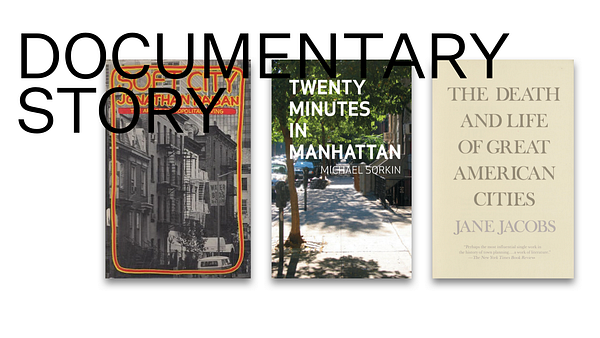
We would also touch on both design fiction, in various formats, such as work by Superflux and others, as well as speculative or ‘paper’ architecture, such as the old guard of Archigram, Superstudio, and Cedric Price but also contemporary practitioners like the extraordinary visions of a reimagined Brooklyn or Lagos by Olelakan Jeyifous (as discussed here). As Einar points out, however, using work of Superflux’s quality, for instance, is always a little dangerous as students are immediately and deeply drawn into it. It is often so compelling, sharp, and well-produced—yet this is not the course for that work. So we used some insights drawn from these approaches as a kind of ‘seasoning’ on the dish, rather than the dish itself.

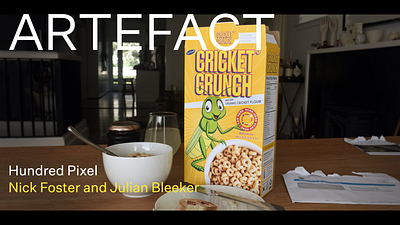




And as well as this ‘paper architecture’ and speculative design, we also covered ‘propositional urbanism’. I described Space10’s work, particularly their neighbourhood-scale Urban Village, we paused on Rory Hyde’s retrofitted Melbourne suburbs and Framlab’s Open House proposal:


We also gave a talk on observation techniques, covering some core techniques of user research and field study and some classics of urban and architectural observation, alongside ways of seeing neighbourhoods through different lenses (physicality, multi-sensory, feminist, political, ecological, food, digital etc etc.). I also described the ‘soft eyes’ approach that frequently unlocks fruitful trajectories in strategic design practice. Below, the set of texts outlined to dip into, which is in no way an attempt at a definitive set; simply, a hopefully stimulating selection.

Finally, despite the name, this is not really an Oslo Futures Catalogue; it is simply an exploration of possible-future ‘everyday social infrastructures’ in some Oslo-like neighbourhoods. But in our talks and reading lists we referenced some more formal approaches to futures work—such as Scott Smith’s and Madeline Ashby’s How to Future—as good guides to broader futures work. Closer to home, I’d add in the Living Futures scenarios by Danish Design Centre; being largely text-based, they share the generative openness of that format, leaving us to figure out the material and spatial realities around their stories.
In this light, Einar and I came back to the immense value in Kim Stanley Robinson’s recent novel Ministry for the Future, in that it describes what’s on the table, in terms of the visceral enormity of our challenges, but also diversity of opportunities and possible scale of societal, political and economic transformation. What it does not do is convey in tangible terms what his ultimately hopeful world vision might be like. Robinson spends time listing community organisations and meeting notes, but very rarely the qualities of urbanism, of architecture, of services or interactions, that this very different ‘living environment’ must surely entail. Unusually for a novelist, he does not dwell on what it feels like to live in these new ways, how things might actually work. He does not really dig into ways that societal values might be embodied in tangible realities: the affordances, interactions, materials, capabilities, spaces, systems, settings, architectures, and relationships of everyday life. That is arguably not the book’s ‘job’. But it is ours, as both designers and active citizens. Once again, I quoted Kieran Long’s introduction to the Public Luxury exhibition (which has become an important reference point for Einar and I, in terms of a Nordic design agenda.):
“It is architecture and design’s task to give form to a societal idea (like justice) through the creation of a setting for people to encounter that idea (like a courthouse.)”—Kieran Long, introduction to Public Luxury (2018–19)
As Gerry Canavan says in his review of the book, “You are the Ministry for the Future. Get back to work.”
To work
So with all that and more in their heads, the students were also out in the streets—walking around, taking photos, talking to locals—as well as doing documentary research, from the city’s official strategies to some historical documents.
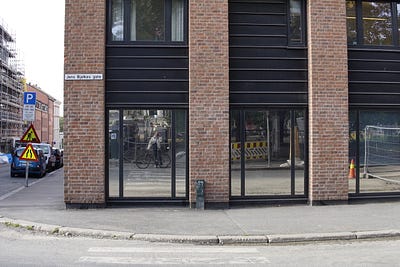
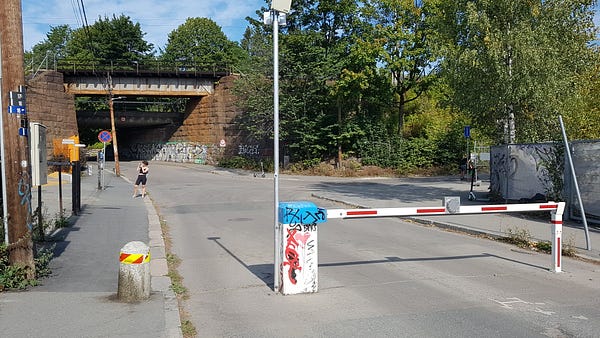







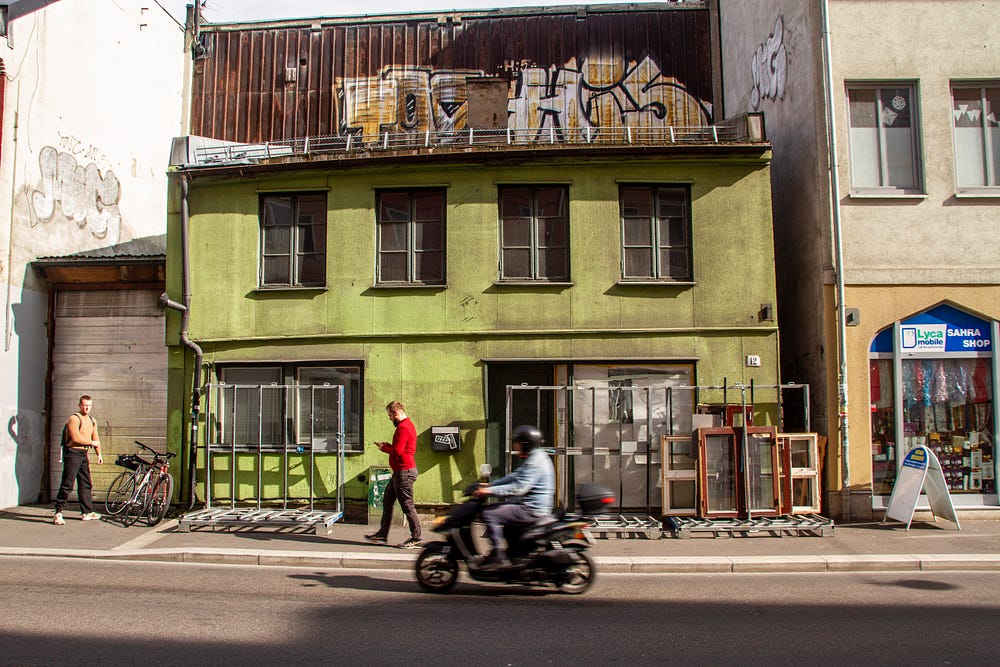
The students found a guided walk through several Oslo neighbourhoods led by Speed Architects particularly valuable. We were positioning much of this course as urbanism-curious, without settling formally in the landscape of architecture, building, and planning, as this design degree is based in service design, interaction design, industrial design, and systems-oriented design (I write more about those issues here). It was up to Einar, Ted, Aleksandra and me to help the students navigate that landscape, but it was very important to get folks like Speed to speak to the qualities, histories, and contemporary dynamics of these Oslo places, and from an architecture and urbanism perspective.
Our collegue Jonny Aspen, professor of urban theory at AHO, also made valuable contributions to the students’ understanding, with his guest talk on walking as an urban research practice.
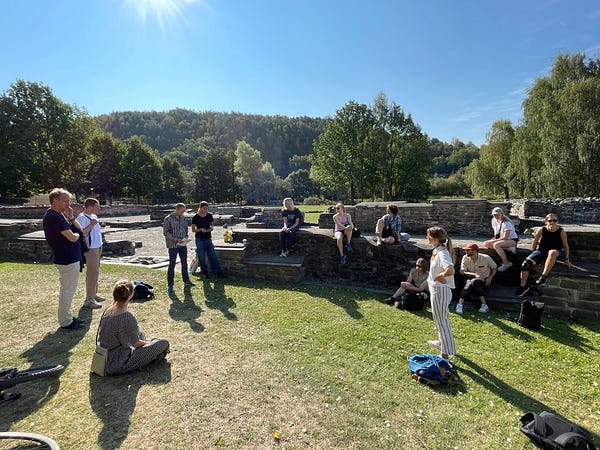



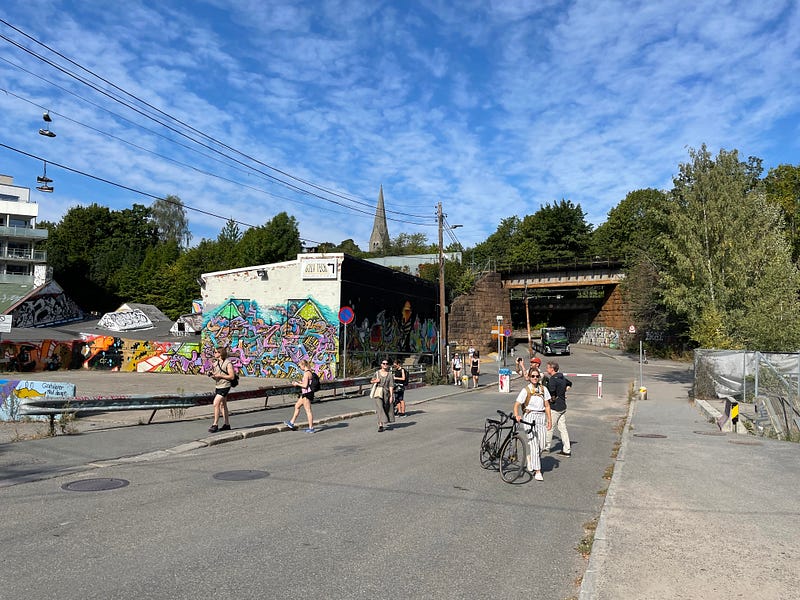
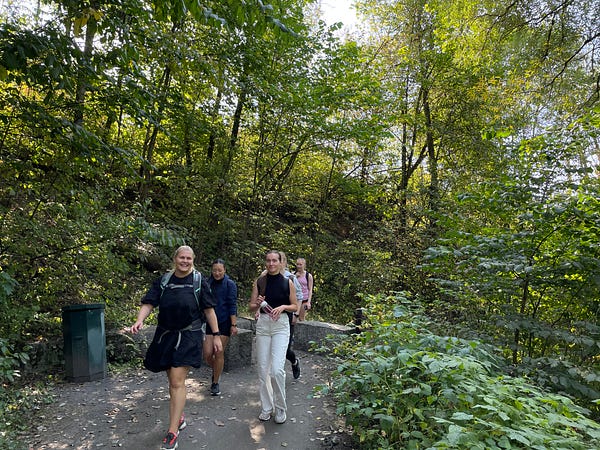

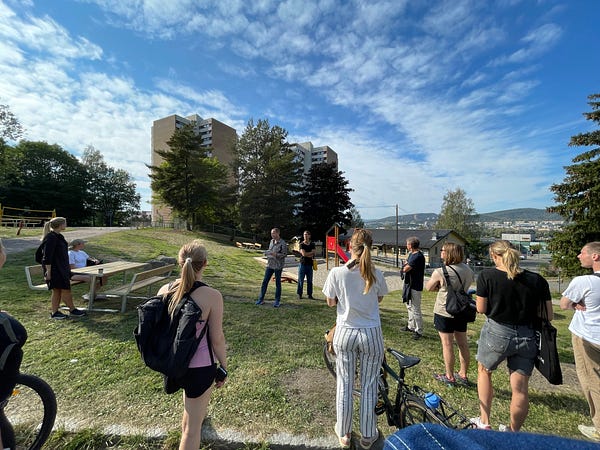

Later, during the phase two project on Karmøy municipality, my UCL colleague Rowan Conway gave a great talk on participative design approaches, principles and practices—as well as pitfalls—and doing design in the context of public sector innovation, which helped massively. We also had a really useful talk from Elias Olderbakk and Erlend Grimeland from the design studio Travers (also former AHO design students) on their work building digital services within the Norwegian municipality sector. Other guests included service designer and AHO researcher Josina Vink and AHO-alumni Geir Atle Hustoft, who both worked through questions of participation and design for society.



Of course, the students took hundreds of photos of these explorations, but the more interesting have ended up forming the basis of the work. You’ll see them in the Catalogue, annotated and contextualised, and then often working as the backdrop for a proposition, for forms of collage (I also briefly mentioned the technique of augmenting photos with speculative sketches about urban data, as in this old ‘teaching and drawing urban sensing’ approach from courses with Andrew vande Moere at the University of Sydney, back in 2009)
Although the photos convey context, they also pull focus on detail. As they are design students, they often locate, and zoom into, the details of interactions in places—signs, posters, door handles, vehicles, trash, bins, steps, stalls, bus stops, and so on—and not simply pan back and survey buildings and landscape. (This has something in common with the ‘bigger than a cellphone, smaller than a building’ approach from Incomplete City, although we didn’t have time to really dig into that with these students.)





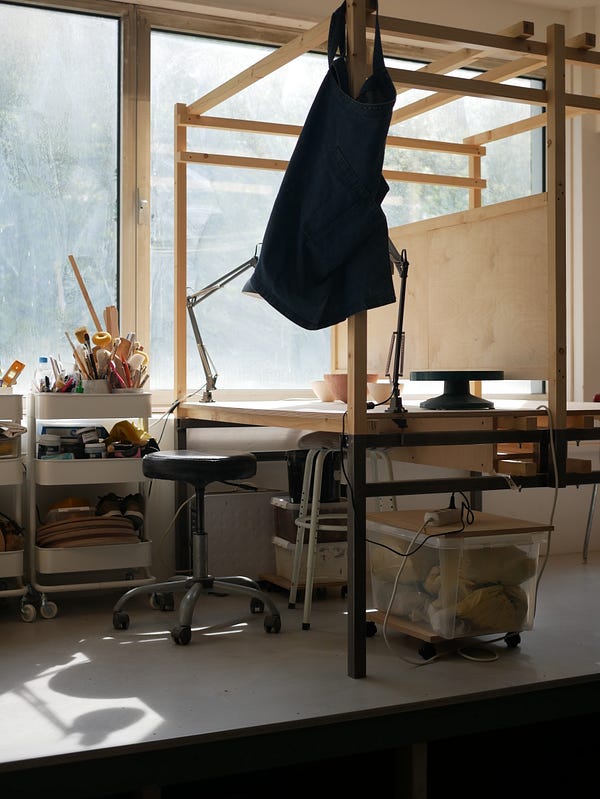
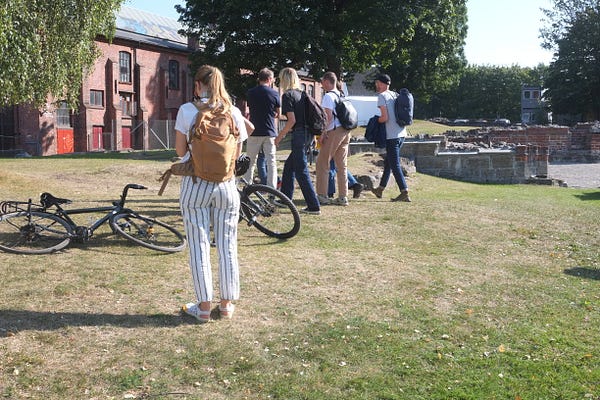

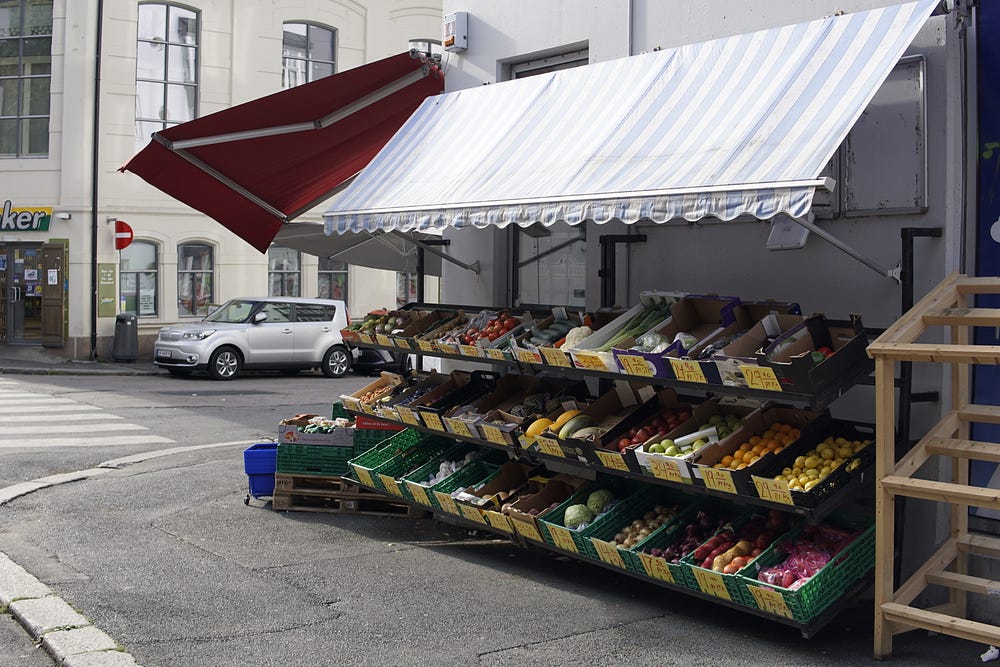







Whilst some of the students used original drawings or compositions, many used these photos as their raw material. Documentary photographs are not only a lightweight and speedy process: using them as the basis for propositions enables the students’ ‘What if?’ work to be grounded in the Oslo of today, whilst the various montage, collage, sketching and editing techniques obliquely lifts the ideas free of that ground, suggesting various tomorrows. It uses recognisable, familiar, and grounded representations of the world around us—images of the everyday—and then exaggerates or accentuates certain aspects of them in order to suggest a different everyday in the future around the corner. You don’t get to a ‘Wakanda’ like this, admittedly, but you do get a meaningful sense of what you might do tomorrow, how we might set off on an altered trajectory using our existing vehicles and resources leavened with a few new ideas, and oriented towards a shifted North Star. Perhaps this might meaningfully open up a different set of possibilities within Oslo’s neighbourhoods. As Scott-Brown and Venturi note in Learning from Las Vegas, “The familiar that is a little off has a strange and revealing power.”
A glimpse of the Oslo Futures Catalogue
So, to a glimpse of portfolio of glimpses, beginning to elicit ideas for possible neighbourhoods in an innovative Oslo. Download the Catalogue to get a sense of how the students interpreted the brief, the place, and these techniques and perspectives. (It’s in a mixture of English and Norwegian, and the various translate platforms available work well enough on that conversion.) And read the introductory essay for some thinking behind this first iteration.
I won’t pick out particular student work here; the approach was to work in collaboration, in small teams, to produce a collective piece of work across a set of shared themes, working as a rich portfolio of initial ideas, with an emphasis on planting many seeds in this garden.
Given the pace of the project (six weeks), the complex brief, the other aspects of the course running simultaneously—and let’s not forget the malevolent lurking presence of a global pandemic—the students’ work is extremely good, I think. Again, our goal was this diversity of seeds of ideas, a garden of possibilities, and it is certainly that, with some of them articulated very artfully indeed; again, particularly given the speed of the process. The ideas hover around some core themes, often framed as verbs: sharing, growing, cooking, playing, moving, owning, making, and so on. We didn’t really have time to unpack some of the deeper strategic design concepts within these ideas, such as how we might frame the different forms of value, outside of traditional financialised metrics, in order to help truly reposition a city’s innovation strategy. But we did plant the seed for that, to be cultivated later.
Below, we’ve reproduced the sections of introductory text from the Catalogue which describes the core development in the work: the springing forward from the observations of What is? to the propositions of What if?
These sections fit together as one continuous movement, from analysis to synthesis. In practice, this process is non-linear, full of tight loops, leaps forward and slow backtracks, as students, of course, pursued speculative ideas immediately, alongside their work deriving insights from observation and other forms of research. Our work as teachers was to ensure that both inferences and ideas were continually refined, avoiding the dreaded ‘fixation’ that can occur in concept development (Crilley 2015).
But this is a preferred strategic design mode: to work on ‘the question’ and ‘the answer’ at the same time, moving fluidly between these modes, backwards and forewards, upstream and downstream, and refining each in response to the other.
Nonetheless, the Catalogue presents the work in these two sections, and not grouped by ‘team’ but rather by the common themes and threads that emerged from the students’ research. The following text is copied from the section introductions in the Catalogue, and sets up the approach:
The catalogue describes how new, or re-framed, social infrastructures might be articulated in everyday life in possible future Oslo neighbourhoods. It has two sections:
What Is? (Articulated observations)
What if? (Glimpses of propositions)
Although the format of the catalogue provides a useful constraint for communication, the students were introduced to various forms of narrative representation during the course, drawing from speculative design, paper architecture, graphic novels and cartoons, films and games, and so on. With the idea of ‘the glimpse’ and ‘the future facet’ in mind, this meant they could focus on conjuring more of a ‘mood-world’, to borrow Ben Highmore’s term, rather than attempt to produce detailed service blueprints, architectural plans and elevations, deeply-researched user journeys, or equivalent.
Rather than selecting one idea to dig into, the direction was to produce a diverse array of observations and propositions, a rich catalogue of possibility which others might draw from, build with, expand, adopt and adapt to their own needs. These are seeds to be combined in more resilient companion planting, rather a monoculture.
The Catalogue’s sketches of ‘What is’
Again, the accompanying article goes into a little more of the thinking behind this emphasis on social infrastructures and neighbourhoods, but this is how the Catalogue frames this first observational ‘What is’ section:
What is?: Observations of everyday life in Oslo neighbourhoods
The first sets of observations focus on simple, shared infrastructures — such as laundries or tool sheds, playgrounds and riversides, bike parking and footbridges — as well as some of the ‘patina’ of the use, relating insights into how local people engaged with them. They also describe dedicated notice-boards and meeting places, as deliberate touchpoints for community, beyond those utilitarian functions.
The use of disused buildings or temporarily defunct spaces and infrastructures, amidst patterns of gentrification and regeneration, was particularly interesting, revealing the ‘spare room’ that cities always have, but rarely find ways to activate meaningfully and equitably. Some observations clearly critique new developments, whilst others question the integration of social housing into gentrifying neighbourhoods — or rather, vice versa.
Patterns of ownership and belonging were also spotted and described, amidst and within objects and spaces that are particularly redolent of community (or lack of it.) Even the quality or quantity of childrens’ toys left out in shared backyards speaks of relative prosperity, diversity, or equity. Small marks on door frames or walls, or the presence of shared plants grown on public spaces like streets, or the residue of a regular maintenance regime, tell stories of permissions and rights, equity and access. Patterns of cultural production — of arts, crafts, and making — can be spotted in both formal and informal settings, growing in the cracks between spaces deliberately set aside for creativity, as well as within them.
Food — growing, cooking, sharing, eating, recycling — and the diverse arrays of greenery and biodiversity beyond simply growing food, was clearly a particular focus, perhaps triggered by its rich potential for urban innovation, and the uneven patterning of these various aspects to food across the neighbourhoods the students engaged with.
Concentrating a little more on the methods than the ideas, in this first ‘What is’ section, organising observations and insights, you’ll see how the photos worked as raw material for extrapolation, whether annotated, collaged, or drawn-over.
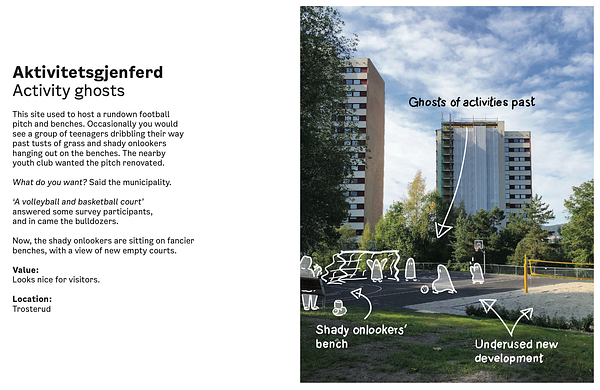




Working at this speed, inferences cannot be particularly ‘qualified’, checked or truly grounded. Some will remain naive, or even erroneous dead-ends or misrepresentations of something rather more complex. Yet all these observations provide input for further refinement nonetheless. As ideas develop through a design process, they are challenged, honed, and buffeted as we increase the resolution on reality. In presentation and discussion, we made clear that the only real way of grounding these ideas is to prototype them, in public, in place. At that point, they can be truly shaped, in symbiotic interplay with the neighbourhoods and the various communities and living environments within and around. As the ideas often concern social innovation, there is a necessary emphasis on care, maintenance, adaptation, truly participative decision-making, and constant learning. This approach implicitly rejects much traditional planning-led thinking and practice, and is not easy to embed within a contemporary bureaucracy as a result. (Hence the subsequent lectures around how to position this work in the public sector, alongside interactions with municipalities in Oslo and Karmøy.)
Multiple representations emerged; these two following spreads use collage, captioned-photograph, section diagram, and annotated photograph, as well as making critical points about the dynamics of urban development in Oslo (and many similar cities.)
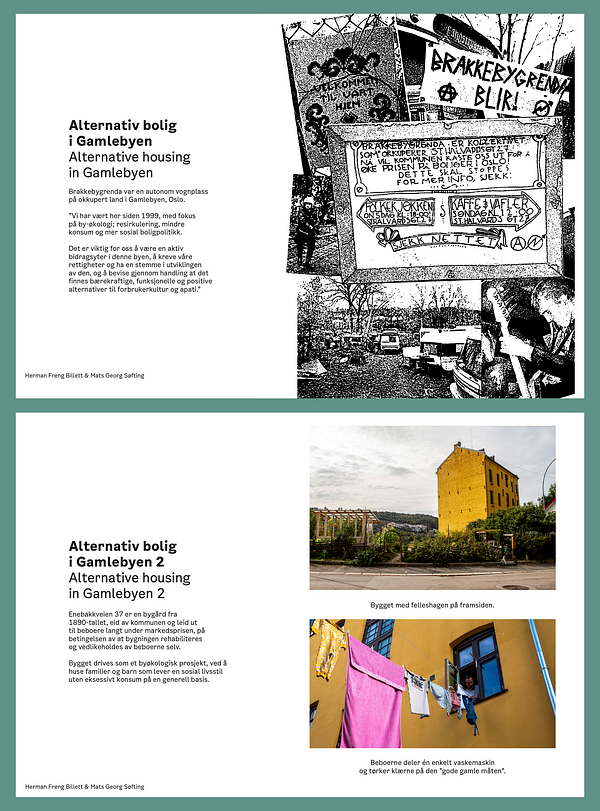
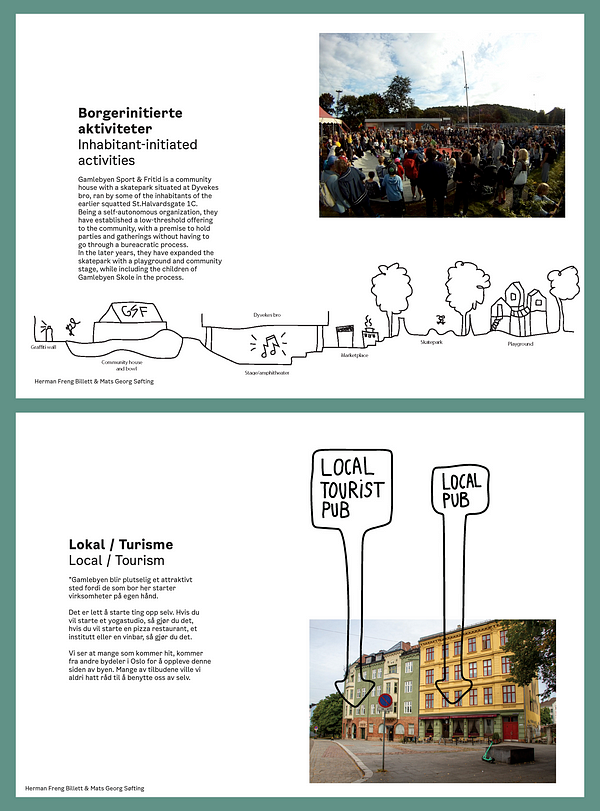
The interaction- and service designer’s eye is drawn to the details of everyday life, the affordances that shape access, adaptation, and ownership—again, this ‘bigger than a cellphone, smaller than a building’ layer. You’ll see inferences drawn from the type and quality of toys left around in shared spaces in housing blocks. Following Juhani Pallasmaa’s notion that “the door handle is the handshake of the building”, what does a close observation of the doors and entryways in housing blocks tell us? A handshake is an interaction, embodying a relationship as well as cultural norms, and in Pallasmaa’s metaphor, these are predicated on the affordances, and other characteristics, of the door handle, which are in turn sitting within those of the building and its architecture, and the surrounding context.
So what are the relationships between ‘things’, like door handles, as componentry of assemblages such as buildings, then neighbourhoods, then the wider city? And vice versa? Between the city as buildings, spaces and landscapes (urbs) and the city as social, cultural and political organisation (civitas)?
This zooming back and forth—from the door handle to the city and back again, recognising, learning and adapting the interconnected relationships between these scales—is a core practice within strategic design. Yet it is rarely allowed to meaningfully surface within traditional policymaking cultures, given their preference for compartmentalisation and siloing, simplification of messaging and short-termism, abstraction and distance to enable liability reduction …

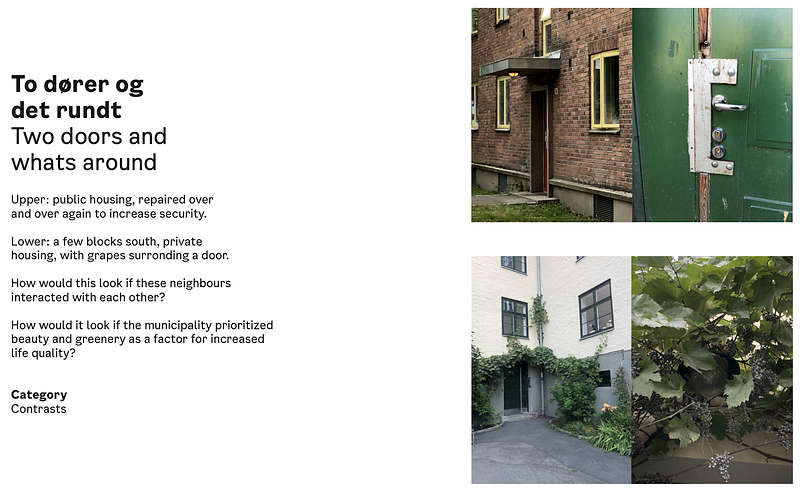
One can also learn a lot from looking at the forms of communication, via noticeboards and other formats. These noticeboards don’t often directly reveal digital communication, of course—although increasingly they might create physical pointers at related digital interactions: links to Facebook groups or hashtags. The digital ‘halo’ around such noticeboards, revealing some essence of the digital neighbourhood, would be a topic for another day too (though digital platforms and interactions emerge in the What if? propositions, naturally enough.)
The detective work of stalking noticeboards, official or informal, or bureaucratic communications processes is quite revealing, though, whether from authority-to-citizen or citizen-to-citizen. Or equally, in the way that a vacant (but beautiful and valuable) building might ‘speak to’ a citizen, who can then trigger a process with an authority, where the content of the bureaucratic response in turn reveals how urban development dynamics can hinder, well, urban development.


As is my wont, I’d placed particular emphasis on the complex relationships between growing, food, public space, biodiversity, green infrastructures, nature-based technologies, regenerative sustainability, and participation and ownership. (Einar always complicates this, happily and correctly, by describing both the rich history of growing in Norwegian cultures as well as the difficulty of doing so in its current climate.) The way that these issues are handled tells us a huge amount about the culture of neighbourhoods, either way. For the students, it quickly foregrounded questions of individualism (a “selfish monoculture”) versus collective ownership and engagement with the city, as well as broader questions around the value of such space, outside of property market-led dynamics. They could see strong traces and strains of shared growing and cultivation, but also the opposite.




The Catalogue’s sketches of ‘What if’
Following the above, this is how the Catalogue frames this first observational ‘What is’ section:
What if?: Propositions for everyday life in Oslo neighbourhoods
The propositions draw from the seeds of the observations in identifiable ways. We can glimpse those observations of food culture, green infrastructure, mobility, shared space, housing and urban development, and so on, but each is reframed, and conveyed via narrative-led ideas. The sketches are richer, the stories fuller, yet they remain tantalising glimpses. They are deliberately open, incomplete, capable of being recombined, reproduced and re-made. As Saskia Sassen (2012) notes, “Cities are complex systems. But they are incomplete systems. In this incompleteness lies the possibility of making — making the urban, the political, the civic, a history.”
Here we see playful, critical and speculative propositions played out alongside simple, useful everyday interventions. The formats for innovation range from apps to community meetings, new types of urban design or mobility systems, plaques and prototypes and playgrounds, sports grounds and streets …
They address questions of intergenerational living, inclusivity, citizen participation, urban regeneration, safety, equity, sustainability and biodiversity… In one narrative, they implicitly address a ‘more-than-human’ perspective, by taking a cat’s eye-view through a neighbourhood.
The ideas both directly and indirectly address the role, positioning, and capabilities of the municipality, amidst the shifting relationships around social contracts, social infrastructures and technologies.
Overall, there is meaningful and considered critique here, but also a positive, progressive sensibility which absolutely conveys a sense of possible futures, of a re-framed everyday, of the sensibilities and social infrastructures of neighbourhoods in a possible future Oslo.
As you’ll see, in this propositional work, the students continue to use photography as a base layer, but a freer approach also emerges which includes original drawings, webpage mockups as forms of design fiction, and fake social media and digital service platforms.
Working with the students, we organised the Catalogue into a set of common thematic areas, such as shared food, intergenerational living, play and sports, or ‘the soft neighbourhood’, and so on.

Food systems always provide powerful arena for exploring and conjuring new ‘recipes’ for community, social fabric, inequality, and shared resources, whilst also addressing the more technical concerns of food waste, carbon and biodiversity loss, diet and health, green infrastructures and so on.


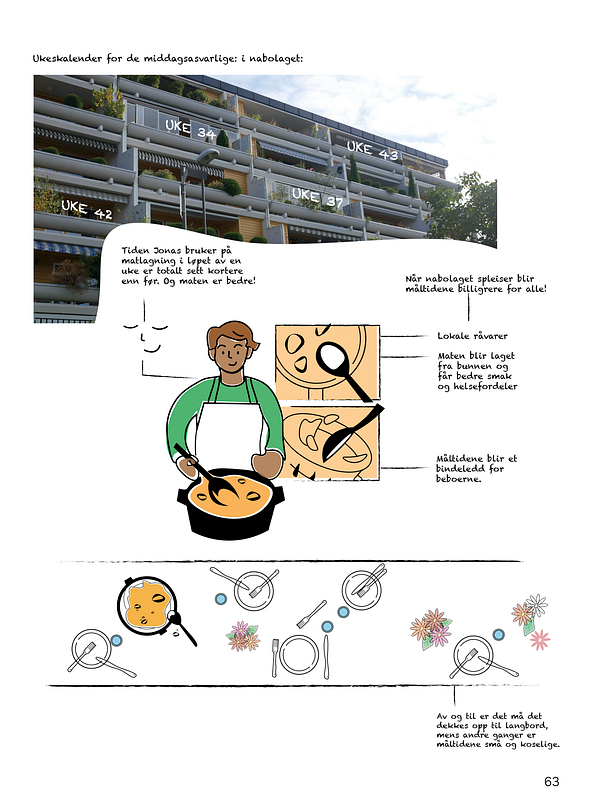


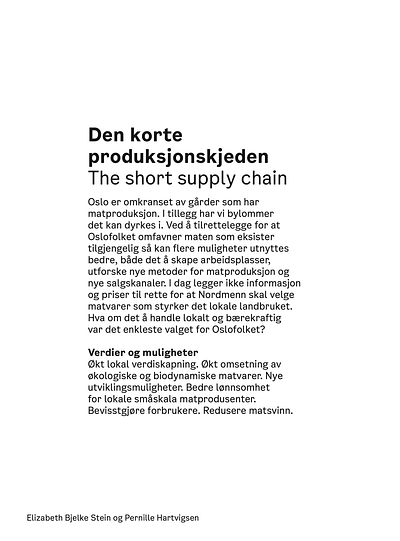

The quality of some of the representation is extremely good, particularly given the short time-frame, the requirement for observational work, and the number of entirely new concepts being thrown at the students (strategic design, public sector innovation, Nordic models etc)


The students’ work often describes the service designer’s sensibility to work coherently across multiple touchpoints, whether it is considering not only the app-end of a citizen participation platform but closing the loop with computer-controlled carving of the proponent’s names into the park furniture that emerged, as well as the paperwork that is still likely to bind these processes together. This small, if attractive, example (below) would still be a challenge to many municipalities, given how endemic New Public Management-based organisational cultures have become across the Nordic region, both in terms of simply organising production or procurement into silos, never mind the more philosophical concerns around moving away from intellectus towards ratio (Bornemark 2018). Even rapidly produced, and with only two paragraphs and four images, the clear vision behind this sketch suggests a blueprint, and impetus, for cutting through those recent logics.


As noted, we positioned the course as ‘urbanism-curious’, almost, and conveyed elements of architecture and planning to students already somewhat immersed in that world, not least by having spent five years in school which has a strong architectural culture and practice. Yet as they were design students, and not architects, questions of intergenerational living, say, might play out across social infrastructures in the form of space, or digitally.
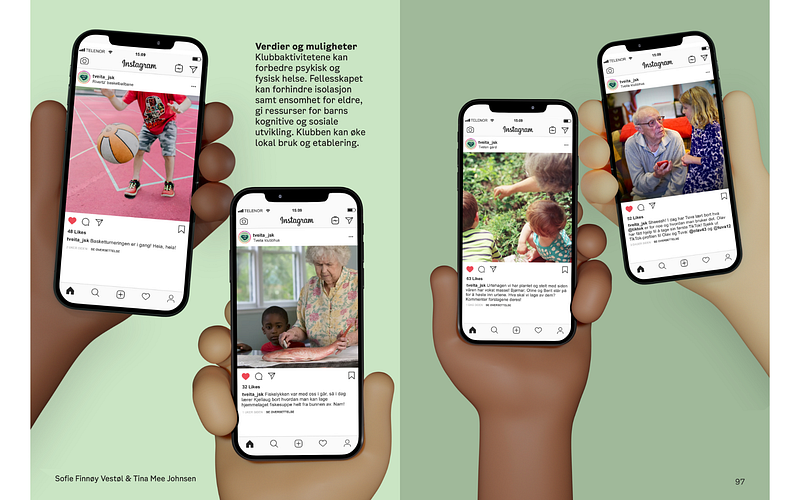

This interplay between a ‘soft’ digital layer of social infrastructure and a ‘differently soft’ layer of physical infrastructure can be seen in many of the landscape- and biodiversity-oriented ‘What ifs’. In the following, the written narrative format we’d previously discussed is used to set up the visuals, as a super-short story (download the PDF and copy-paste the text into your favourite translate tool if you don’t read Norwegian)
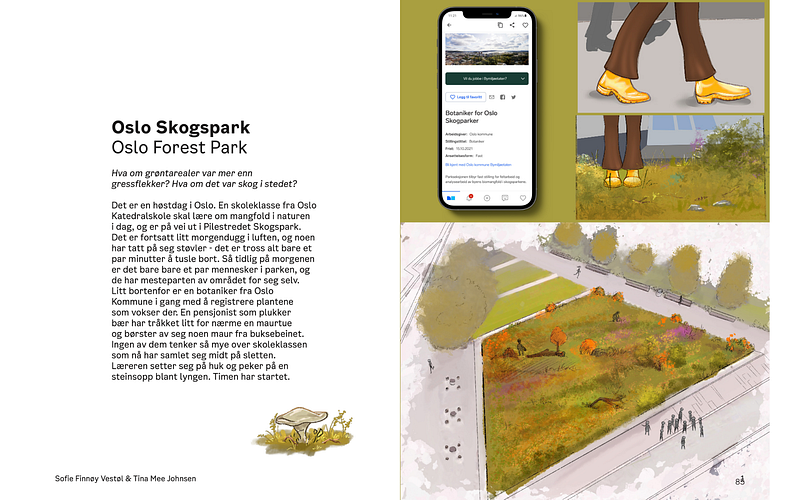

Patterns of housing obviously figured prominently, but rather than concentrate on the formal architecture of housing (that course would be happening down the corridor at AHO), the students looked at the architecture of the problem of housing, as well as what social infrastructures and neighbourhood affordances housing could engender or contain. Running with the grain of the course, the emphasis is on the social innovations that may thrive in the shared spaces and services between the buildings as much as, or more so, than those within. (dugnad = shared in Norwegian.)


The value of the existing city, the existing community, and the existing social infrastructures is something that we stressed throughout the introductory lectures. This focus on the value of the ‘already-there’ is often anathema to urban innovation policies, with their preference for the new over the old, the shiny fiction over the messy reality, the disruptive over the integrative, the allure of tech over the complexity of culture. But it is surely key to any serious urban development moving forward, whether retrofit-led, non-extractive, or otherwise.
“Beauty could emerge from the existing fabric … A not-too-apparent order should be sought from within rather than an easy one imposed from above.”
— Denise Scott Brown
One team described this as a possible ‘self-learning strategy’ for the city.

Within that, the politics of housing, and the more problematic dynamics of urban development, could also be put on the table, via critical, playful or even satirical approaches. Pushing the service designer’s toolkit into design fiction territory enables a speculation about a politician’s handwritten speech notes, glimpsed over the crowd he’s announcing the new policy to, or a couple of pages from an imagined municipal guide to valuing the existing city (caption to the effect of: “Why look to the continent when the good places are right here, waiting on the stairs”), or a perhaps unlikely tourist t-shirt extolling the virtues of an overlooked district (“I went to Gamlebyen and all I got was my perception of Oslo challenged”), or a new municipal ‘Department of Gray Zones’ that could work with districts and neighbourhoods in a more considered way, or a fictional Zoom call in 2026 about a long-vacant building finally being breathed back into life, or a spread from an architecture magazine, and so on.
You can see many examples of this design fiction technique in the Catalogue, beyond their implicit suggestion of retrofit. Note how these broader ideas, questions and discussions can be conjured through a few well-considered, artfully-produced and quietly descriptive artifacts. Note also a relatively free-flowing, almost transdisciplinary facility with a variety of designed forms, touchpoints, experiences and structures: from leaflets to buildings, meetings to organisations.




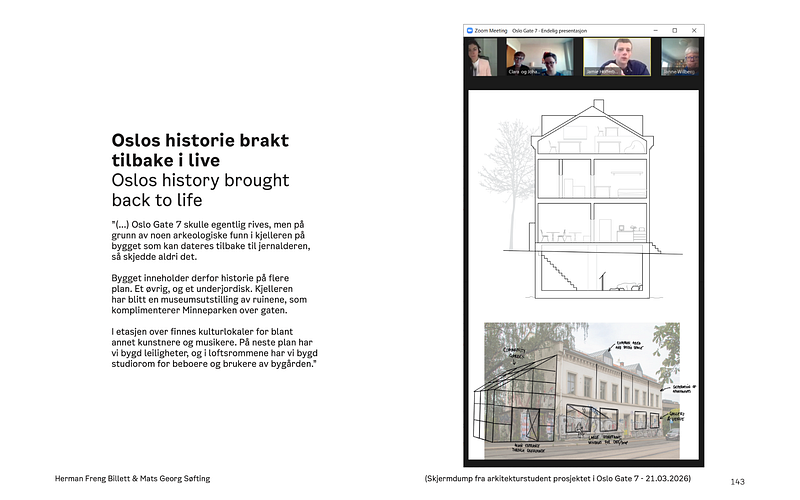

Of course, in this light, the question of retrofitting streets came up several times, building on the one-minute city street missions we’ve been prototyping in Sweden. This also brings up another consistent theme: an adaptive, genuinely community-led prototyping of shared and public spaces (this relates to a broader, deeper definition of public space that we discussed, drawing from the concept of al masha).

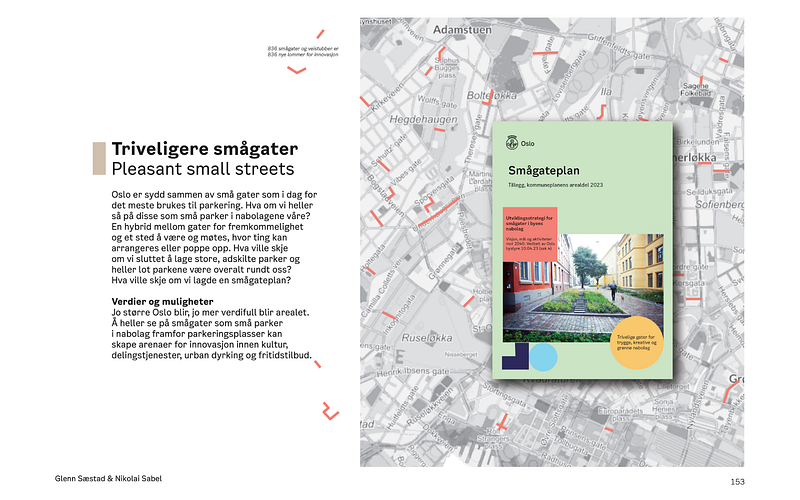
This reframing of mobility-oriented social infrastructure (streets) as places of culture, interaction, and multiple, diverse uses (not simply parking and driving) was continued through multi-use mobility, winter sports infrastructure for movement as well as sport, and thus sports infrastructure as social infrastructure. The ‘What is’ observational work had noted how a well-intended focus on a single use—a sports pitch, for example—had actually led to under-use and relative inactivity, and actually removed functions from previous diverse space (of course, this reduction of function is precisely what had happened with streets under the regime of transport planning.) The ‘What if’ looked to reverse this, describing the possibility of distributed networks of sports social infrastructure (football pitch is also meeting place, and so on).



Indeed, another team threaded all these ideas together, indicating a kind of weaving of multiple ideas, functions and possibilities through a pseudo-neighbourhood space, or at least a cartoon corner of it. This embedded strategic priorities as questions: taking Oslo’s intention to plant 100,000 trees across the city, what if these were shared fruit trees?
This is also an example of how a ‘seed’ might work: there are numerous pragmatic reasons why forests of fruit trees are hard to pull off in Oslo, just as the notion of planting many hundreds of thousands of trees could generally be as problematic as it is positively transformative—at least without more diverse knowledges and practices at the helm.
But the seed itself should not yet be critiqued. What happens next with that idea, as it is buffeted by reality, is a further important chapter in the strategic designer’s playbook (‘Stewardship: how the integrity of an original vision can be maintained, whilst continuing to adapt and develop, as it moves through delivery and into life.’) But that is also a different stage to this framing of a new question from within an existing strategy, indicating possible future neighbourhoods predicated on entirely different relationships with biodiversity, landscape, food, and care.
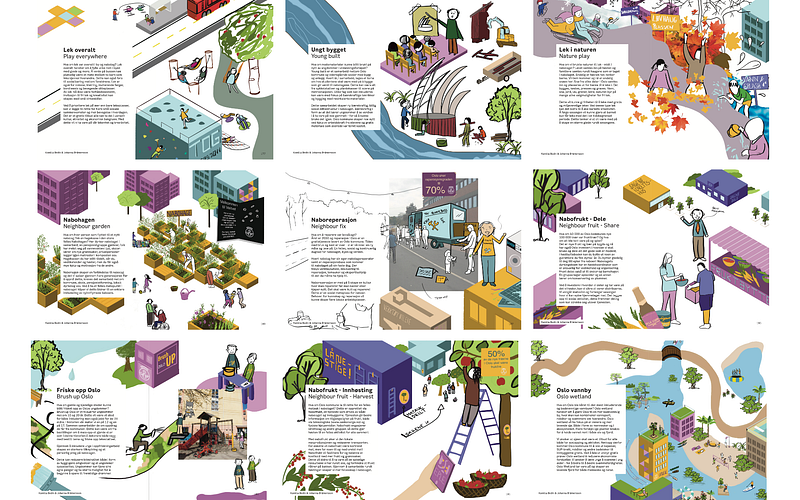
The example above uses a kind of illustrative kit-of-parts approach, almost tending towards Richard Scarry layouts. Other teams used the comic strip format’s facility with efficiently, and playfully, conveying narrative, identity, context, movement and space.

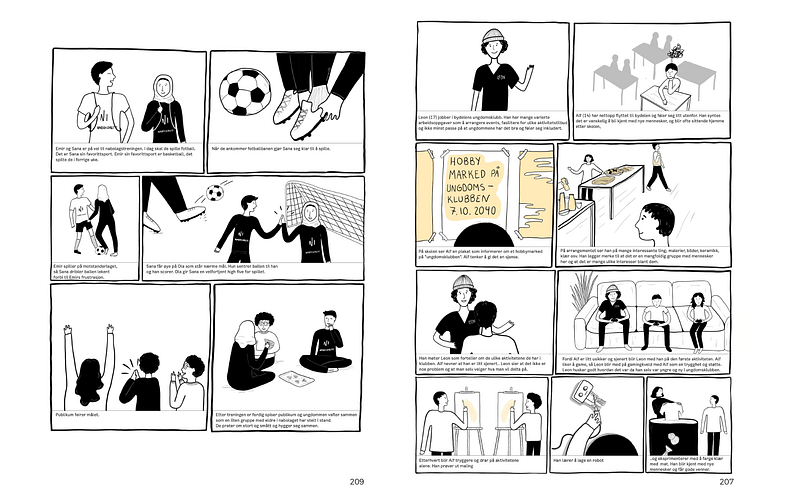
Finally, one team was perhaps drawn to our prompting to also imagine neighbourhoods from a non-human point-of-view; I’d shared quotes from Timothy Morton about this challenge, whilst also noting the recent presence of wolves in the suburbs of Helsinki.
Ed. Subsequently, in early 2022, I taught the third iteration of our 'Transformation by Design' module of the Masters of Public Administration at UCL, and added in further perspectives on ‘observing’: from Pallasmaa’s critique of ocularcentrism, and the need for multi-sensory understanding (including what he calls a post-Aristotelian understanding of what senses even are), as well as indigenous knowledges (pointing students at Steffenson, Yunkaporta, Page & Memmott in particular) as well as Watson’s Lo—TEK, and Simard's Finding the Mother Tree.
Anyway, responding partly to this, one of the teams rather wonderfully drew a page from a cat’s perspective — ‘Potespor’, which translates loosely as ‘Paw Prints’— as the feline researcher explored the various new social infrastructures in the neighbourhood:

So in all this, despite the constraints of having to produce a document, the students had explored multiple narrative formats, sketches, images, texts, photographs and montage techniques, as well as a diversity of ideas and perspectives. Given more time, they clearly could’ve dug deeper on many aspects, both intellectual and formal, as well as the possibility of producing outcomes well beyond what Marco Steinberg calls ‘document knowledge’. Indeed, in the next phase, with Karmøy municipality, we hope that prototyping will be on the table.
But for now, Einar, Ted, Aleksandra and I are incredibly impressed with the work done so far. As teachers, whilst we tried to help cultivate some of the more meaningful ideas, and offered technical guidance in terms of representation, our emphasis was not yet on setting a very strict quality control on winnowing down the ideas themselves—say, applying value frameworks to identify the most fruitful, or testing the water with Oslo Kommune staff before the final presentation—or really marking them in terms of quality of representation. Equally, although you will find critique, both subtle and otherwise, of the paucity of practice typical within ‘urban development’ and ‘urban innovation’, the emphasis was placed on moving the critical discussions we had in seminars and one-on-ones into tangible propositions, sowing the seeds of possible alternative futures.
All of these various forms of rigour—intellectual, political, technical, aesthetic, testable, and otherwise—can follow, as students are now weaving some of these threads of thought and practice into their final year diploma projects. This was an opportunity to quickly ground themselves in the social infrastructures, architectures and cultures of their surrounding neighbourhoods (What is?), rapidly generate ideas from that grounding and transform them into tangible, communicable propositions (What if?), and in doing so, to locate the work at a critical distance from the municipality’s official process for generating an urban innovation strategy whilst also seeding it with meaningful, thoughtful and useful concepts and methods.
Combining multiple functions, values, identities, and possible adaptations into these shared infrastructures appears to be both common sense and deeply rooted in any traditional cultures that value resourcefulness, resilience, regeneration, rootedness. Yet this complex interweaving is precisely what does not happen in the highly stratified, siloed, planning-led organisational cultures common to many so-called Western/Northern municipalities and governments. The students, however, immediately pursued these themes: working with the grain of the existing neighbourhoods to unlock a particular kind of innovation, a resilience drawn from distributed, adaptive, and diverse multiple uses.
Along the way, we had discussed some more sophisticated approaches drawn from indigenous nature-based technologies and infrastructures, such as those described in Julia Watson’s ‘radical indigenism’ book Lo-TEK. And it may seem a long bow to draw in this sometimes chilly Nordic context, but Victor Steffensen’s book on Australian Aboriginal fire practices is also instructive, and inspirational, on the bodies of knowledge we could open up, suggesting entirely different, but far more powerful conceptions of technology and infrastructure than that found in most innovation strategies. We discussed the possibility of revealing Sápmi knowledge in this context (indeed, as Steffensen does in his book), briefly alighting on Joar Nango’s mobile library (and thus emblematic social infrastructure) installation, Girjegumpi.

Any such attempt should be carefully worked through, and not in the way that Steffensen guards against, warning against “Traditional knowledge meets Western science” headlines for largely exploitative research projects; in other words, as an appropriation without reconciliation and reparation. We later had a good discussion about this as a class, in the midst of the second project around gender equality in Karmøy, dwelling on the ‘not about us, without us’ principle.
Steffensen notes how Aboriginal fire knowledge is cultural, spiritual, aesthetic, social, healthy, political, economic and environmental all at the same time, in ways that cannot be reduced down lest if ends up less than the sum of the parts.
“The way Western science communicates knowledge is to separate everything into different categories and names. Separating knowledge is done by breaking down the values to give them their own separate findings. For example, Aboriginal fire knowledge is applied to the landscape to maintain the health of animals and plants. Science takes this aspect of Aboriginal fire knowledge and creates a new category called ‘burning for biodiversity’. As a result, people think burning for biodiversity is different to Aboriginal fire practices … When knowledge is separated into different categories it becomes watered down. It also ricochets into forming divided mindsets and creates a fragmented knowledge base. A confusion of the right information that encourages the wrong application and interpretation.”—Victor Steffensen, Fire Country (2020)
Again, we are not making any claim for the work of this class to be particularly informed by indigenous practices at all (again, ‘not about us without us’ applies to learning.) But either way, one can infer from the Catalogue’s portfolio of ‘glimpses’ an affinity with infrastructures, systems, interventions and practices that can carry a multiplicity of values, aspects, conditions and uses, as well as engage a diversity of users, makers, owners, and living beings, and with a deliberate blurring of formality and informality, space and place, plan and action, in terms of ownership, governance and society. This all happens at the same time, in the same things, and the ideas in the Catalogue are rarely separated into component parts accordingly. Unifying themes are as close as we get to that form of classification or categorisation. This affords a quite different framing of innovation and technology than most urban innovation strategies tend towards, and opens up rich seams of possibility.
Learning whilst Covid
Finally, whilst Oslo has, generally speaking, been less affected than many other places, the Covid-19 pandemic still completely disrupted the plan for the course. Although students were often on-site at the college, the dedicated studio space—usually essential to this kind of work—could not be used. Students were often present on Zoom only, due to sporadic sicknesses, which meant awkward hybrid teaching with some in class, some at home. With me based in Stockholm, I was only able to visit in-person twice over the three months (normally I would be on the Stockholm-Oslo train every Sunday night; that train wasn’t even running). My contributions were usually via the denuded interface of Zoom, which in terms of actual teaching and learning interaction often feels like trying to communicate by shouting through a series of drinking straws strung together across the countryside from Sweden to Norway. The end-of.year student show could not be meaningfully held at all. But somehow, it all still worked, a tribute to both the staff at AHO and the students.
The final presentation was to the team working on Oslo’s official innovation strategy, with representatives from Oslo Kommune, D-Box, and Rambøll, who then engaged in discussion about the ideas in the work, as well as the methodology. The Catalogue was well-received, not least for the students’ facility with making rapidly complex ideas tangible and evocative, and on the Oslo strategy team’s request, Einar has contributed the Catalogue to their project.
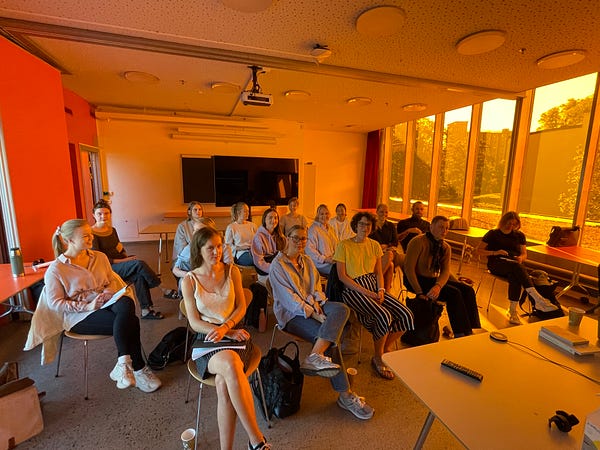








The Oslo Futures Catalogue: A portfolio of glimpses of possible neighbourhoods in an innovative Oslo
Download the catalogue here
You can download a copy of the Oslo Futures Catalogue v1 (PDF) here, and read more about the thinking behind the course, the work, and the catalogue itself in this accompanying article.
References
See fuller set of references for this work in the accompanying ‘sister’ article: The Oslo Futures Catalogue as a garden of ideas.
- Bornemark, J. (2018), The Limits of Ratio: An Analysis of NPM in Sweden Using Nicholas of Cusa’s Understanding of Reason, in Ajana, B. (Ed.) Metric Culture, Emerald Publishing Limited, pp. 235–253
- Crilley, N. (2015), ‘Fixation and creativity in concept development: The attitudes and practices of expert designers’, Design Studies, Volume 38, May 2015
- Highmore, B. (2013), Playgrounds and Bombsites: Postwar Britain’s Ruined Landscapes, Cultural Politics 1 November 2013; 9 (3): 323–336. doi: https://doi.org/10.1215/17432197-2347009
- Sassen S. (2012). «Cities: A Window into Larger and Smaller Worlds». European Educational Research Journal. 2012;11(1):1–10. doi:10.2304/eerj.2012.11.1.1
Einar Sneve Martinussen is Associate professor and Chair of Interaction design at the Oslo School of Architecture and Design. Dan Hill is Professor (II) at the Oslo School of Architecture and Design and Director of Strategic Design at Vinnova, the Swedish government’s innovation agency. Ted Matthews is Associate professor and Chair of Service design at the Oslo School of Architecture and Design. Aleksandra Zamarajeva Fischer is Assistant professor at the Oslo School of Architecture and Design.

Leave a comment